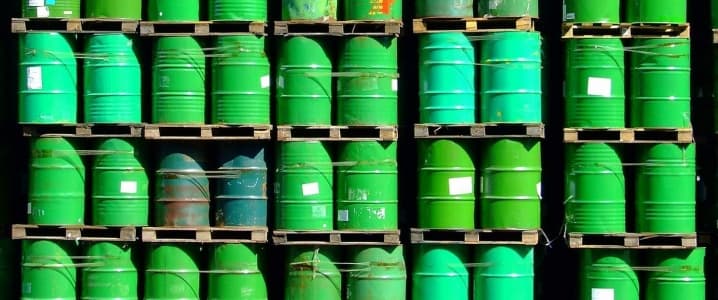Shale companies have pushed breakeven oil prices below $40 per barrel—but so have major oil companies.
Analysts commonly portray cost reduction as something unique to the tight oil companies. Data from annual reports filed with the U.S. SEC (Securities and Exchange Commission) suggests otherwise.
(Click to enlarge)
Along with tight oil companies, ExxonMobil, Royal Dutch Shell, ConocoPhillips and ChevronTexaco all had 2016 breakeven prices below $40 per barrel (Figure 1).
Figure 1. Breakeven Prices for Majors and Tight Oil Companies Were All Less Than $40/Barrel in 2016. Source: Company 10-K and 20-F SEC filings and Labyrinth Consulting Services, Inc.
SEC 10-K and 20-F filings include the standardized measure, a projection of discounted (10 percent) future net cash flows from production of proved oil and gas reserves. By dividing the standardized measure by the volume of proven reserves, breakeven prices can be calculated by subtracting the future cash flow dollar-per-barrel amount from the SEC average price for the year.
How is it possible that ponderous major oil companies have similar breakeven prices to much smaller, innovative shale companies? Simple–costs have fallen for everyone since 2014 as oil field service companies competed for limited projects by working at a loss. Related: Wall St. Gears Up For The World’s Biggest Oil Trade
In fact, the oil and gas well drilling producer price index fell 45 percent between March 2014 and January 2017 (Figure 2). As I wrote in an earlier post, sharply lower breakeven prices are 10 percent technology and 90 percent industry bust.
(Click to enlarge)
Figure 2. The Cost of Drilling Oil and Gas Wells Fell 45 percent After The Oil-Price Collapse; Unconventional Plays Resulted In a 4-fold Increase in Drilling Costs. Source: U.S. Federal Reserve Bank, EIA and Labyrinth Consulting Services, Inc.
And for those who think that unconventional oil and gas are low-cost resources, those plays resulted in a 4-fold increase in the cost of drilling wells between March 2003 and March 2014. That’s why oil cost more than $90 per barrel for 4 years before the price collapse.
So much for technology solving all of our energy problems.
And when you hear about tight oil companies breaking even at $20 to $30 per barrel—that’s not what they told the SEC in filings made just a few weeks ago.
The Downside of Lower Breakeven Prices
The downside of lower breakeven oil prices is that companies make a lot less money in the future. Companies must write down reserves whose development costs are greater than their market value at lower oil prices. Figure 3 shows that future net cash flows were on average reduced by about two-thirds in 2016 compared with 2014.
(Click to enlarge)
Figure 3. Lower Future Net Cash Flows Are The Downside of Lower Breakeven Oil Prices. Source: Company 10-K and 20-F Filings and Labyrinth Consulting Services, Inc.
ADVERTISEMENT
Related: How U.S. LNG Transformed The Market
Companies are effectively high-grading their assets by writing down wells with poorer performance. Breakeven price is lower because only most profitable wells are included in the calculation. Plus, the burden of taxes in addition to property and equipment costs associated with written down assets are removed.
The key take-away is that 85 percent of lower breakeven prices were realized in 2015. Incremental improvement in 2016 was only 15 percent.
Advances in technology and efficiency are real but falling breakeven prices are no miracle and are not a shale company exclusive. Instead of celebrating lower breakeven oil prices, we should be lamenting lost future cash flows that an oil industry depression has wiped out.
By Art Berman for Oilprice.com
More Top Reads From Oilprice.com:
- Tanker Traffic Points At Much Tighter Oil Markets
- Geopolitical Risk Premium Is Back In Oil
- Saudi Arabia Vs. Russia: The Next Oil Price War






















Sounds like we could sharpen our pencils. Investing in fossil fuel is becoming more challenging. Thank you for this latest article.
As for the cost curves you're showing, shale makes up only ~5% of total production and less than 1% in 2010. The curve you present is for the entire industry's index. To say that 5% of the production drove the cost increase is illogical.
I would agree that the entire industry - not only LTO - has seen significant cost reductions over the last 2 years but both are largely due to supply chain tightening. I would maintain that LTO has historically been more conducive to structural cost declines than the conventional world as we have seen drilling and completion efficiency gains - so if rig rates come back into equilibrium those gains should be retained. The industry as a whole will also see efficiency gains but it is more difficult to realize them.